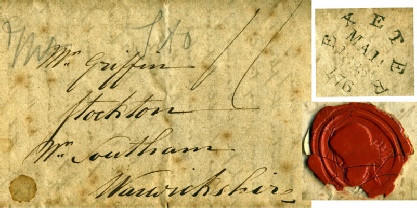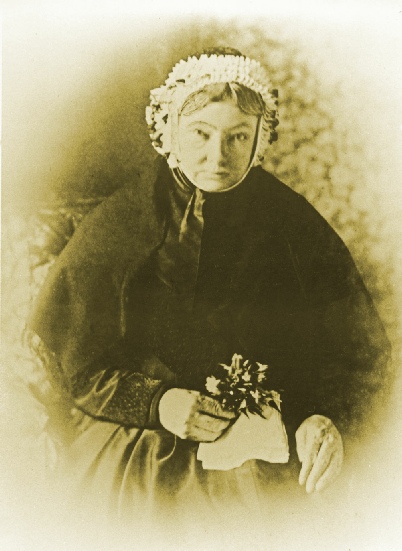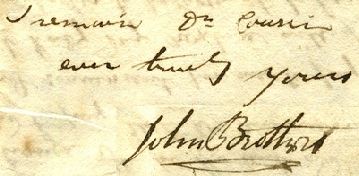


|
The Griffins of Stockton Fields (later Hill Farm) 1817- |
|
On August 7th 1824, William Griffin married Ann Clark(e) at the Parish Church of St James in nearby Southam, where his younger brother George was, at least by 1830, in business making hats. A marriage allegation survives, granted at Napton on the Hill on August 5th by Rev. Thomas Bromfield, surrogate of the bishop. William’s gave his place of residence as Stockton and declared (made the “allegation”) that his wife- There are many reasons why a couple applied for a licence instead of having the banns of marriage read in church on three successive Sundays, a common one being that due to the shorter residence requirement of the licence and the ease with which the residence requirement could be avoided they could marry away from their usual places of residence. The resulting ceremony might well cost less than a local wedding and this may have been an incentive in much the same way as later quiet marriages in registry offices, possible from 1837, also avoided cost. Again, if the bride- Ann was born in 1800 in Pailton in the parish of Monks Kirby, twelve miles north of Stockton. Between 1825 and 1841 she and William had seven children, three girls and four boys. The Griffin naming custom was again followed, three of their four sons being baptised William, Thomas and John. There is no known photograph of William senior, whose death in 1861 came before it became common in rural areas, and maybe generally acceptable to older people, to “have their likenesses taken”. However, his wife outlived him by 24 years and her portrait here is possibly of a woman in her seventies: she died in 1885. The practice wearing of lace caps indoors died out in the 1860s except where elderly women maintained the custom of their younger days. Ann’s stern bearing may reflect her character in old age, or could simply be the expression of someone who felt uncomfortable in an incomprehensible situation where for the first time in her life she had been asked to ”freeze” and look at a hole in a black box. On close investigation it appears that part of the left side of the face may have been overexposed, and that the photographer has attempted to touch up the affected area, with not very flattering results.
We learn a little about William Griffin and about his life at Stockton Fields from a letter of March 15th 1825, written to him by a first cousin, John Brothers, from his Devon home, The Poll House, Alphington, just two miles south of Exeter. (The house still exists, as “The Pole House”, and is now within the parish of Ide, pronounced “eed”, which adjoins Alphington to the west.) John’s letter is clearly a reply to one from William which referred to his marriage to Ann and invited John and his wife Harriet up to visit them. John mentions returning “from Sea” , probably from service on a warship, as on July 14 1818, at the age of 25, he was appointed a Lieutenant in the Royal Navy. Nevertheless, in 1825 he has a farm, as referred to in his letter (see below). John writes, “I was not aware of your being married when I wrote you last or I should have heartily congratulated you as I am sure you will now very soon extricate yourself from the many difficulties you have had to encounter, particularly with a partner like Mrs Griffin who I am sure is possessed of every good quality both as respects a good house Wife and an amiable partner you must already perceive a wonderful difference as to your housekeeping between that extravagant housekeeper old Molly whose only study was her own comfort no matter at what expense, and the management of Mrs Griffin who I am confident only seeks your welfare.” The difficulties mentioned probably relate to family squabbles over money and inheritances, to judge from rather cryptic references John Brothers makes in his letter, but we also learn that William apparently had not had the best of housekeepers! John goes on to say, “I always had a great wish to hear of your marriage as your good nature and good opinion of the world have often caused you to be imposed upon - The letter was written only a decade after Jane Austen became famous, and some passages in it could have been lifted directly from the pages of her novels: “I should be extreemly happy to avail myself of your kind offer by bringing Mrs Brothers to Warwickshire this summer and she would I am sure be equally proud to find she had such an agreeable cousin as Mrs Griffin and I will venture to say they would be most friendly together but being so much occupied in my farm I am afraid I must defer it for a short time altho' I am extreemly anxious to see you and sincerely wish we were living near each other…”. Horses and dogs were often prized possessions, important as a means of transport and of getting meat for the pot, as well as for sport, and John writes, “please to tell my father I do not wish to have the dog as he is now getting too old to send so far and the Gentleman I wanted the bitch for is desirous of having a bitch puppy to breed from, he may perhaps be able to procure me one no matter how young or blue or Black ..”. It seems the “Gentleman” has already agreed to the price: “.. if so I will enclose a note to pay the expence of carriage and shall very soon send him the five Pounds ...”. John Brothers was from a family of Bishop’s Itchington, 4½ miles from Stockton, and an easy hour’s ride, if William delivered his cousin’s message to his uncle Thomas Brothers by word of mouth. John Brothers may have been homesick; at least, his dream in 1825 was to become a farming neighbour of William’s, as were Messrs Bayes and Quiney. To read a transcript of this extract, hover your pointer over the image below. The words “with a little of your assistance with my present Income I am pretty sure I could make it answer” could be taken to mean William was being asked for financial help. However, the intended meaning would have been made clear if John had put a comma after the word assistance. John was just two years younger than William but had been away in the Navy and probably felt his cousin’s greater experience in farming would help him. There are indications that he was not badly off. He says in the letter, “Things are now got to a very fair price and the Country in a very flourishing state” and when inviting William and Ann to Devon, says “the expence in travelling [is] but trifling”. The distance between Alphington and Stockton being about 170 miles by road, the letter cost 11 old pence or about 5p to send -
We imagine that William, John and their wives did visit each other, but it seems doubtful that John Brothers fulfilled his dream of farming close to his Warwickshire birthplace. At the 1851 census he was living in London, in Croydon, and in 1861, was in Lewisham - Downloads: marriage allegation (jpg) images of letter (pdf) transcription of letter (pdf) |




| 2 Sitemap |
| 3 Maps |
| Late Victorian map of Stockton |
| Pre 1844 O.S. map Stockton-Long Itchington |
| Stockton Fields - 2 |
| Stockton Fields - 3 |
| Stockton Fields - 4 |

